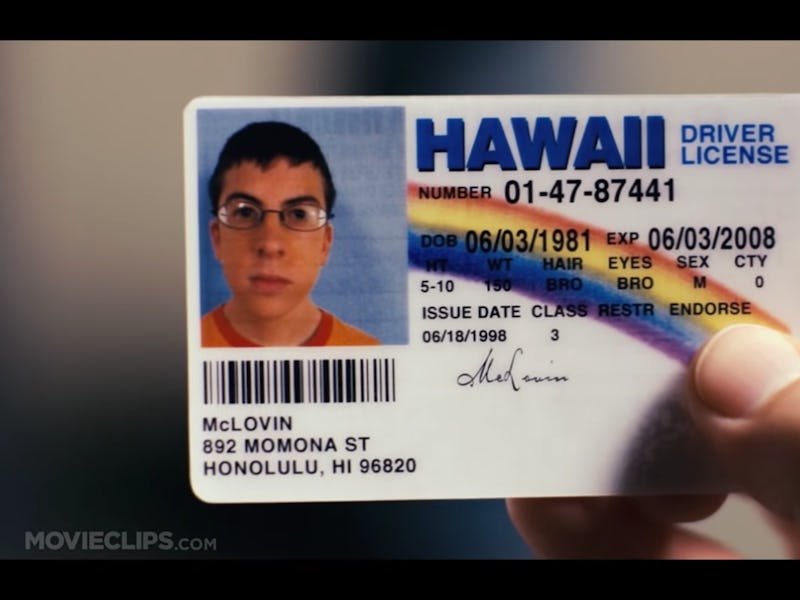Got a Self-Driving Car? Soon, No License Will Be Required
Future generations might skip the whole test thing altogether.

In 1913, New Jersey became the first state to issue driver’s licenses. They were a big hit with the public. “Many letters of congratulation have been received by the department, and not one of condemnation,” Job H. Lippincott, the state’s motor vehicle commissioner, told reporters at the time. “I confidently believe that other states will follow New Jersey’s lead, and that the results will be fewer accidents and better road conditions.”
Licenses soon became the standard, and were for more than a hundred years. But it looks like they too might become irrelevant: If your car can drive itself, why do you need a license? In October, the California Department of Motor Vehicles announced that it won’t require drivers licenses for self-driving cars if the federal government deemed them safe enough.
“If there is no driver, there is no need for a driving license, just as the passenger in a taxi needs no license to get a ride,” Bryant Walker Smith, assistant professor in the School of Law at the University of South Carolina, tells Inverse. “The relevant state law questions are whether an automated vehicle requires a human driver, who that driver is, and what she must do and may not do.”
With self-driving cars, licensing rules could very well present a situation like the one in 1913, where states have radically different policies. In the hope of avoiding such clashes, the federal Department of Transportation produced self-driving car policy in September 2016. The guidelines cover areas like state policies and safety assessments and will receive regular updates as the technology develops.
The self-driving guidelines are a signal that the federal government might avoid trying to control regulation at a national level.
Attorney Hillary Rowen, in an op-ed for Insurance Journal, predicts that the federal guidelines will nudge state legislatures to follow similar rules, preventing the federal government from taking charge through the interstate commerce clause. (There’s a curious precedent for this involving mud: the Supreme Court ruled in 1959 that Indiana’s ban on straight mudguards placed an unfair burden on interstate commerce, meaning that inconsistent state vehicle standards can be harmonized. The DOT’s evolving self-driving guidelines should avoid the situation altogether.)
“We’ll see different states taking different approaches to these questions, with some deciding that existing law is both sufficient and consistent with automated driving and with others clarifying or changing that law,” Smith explains.
Tesla's vehicles now come with Hardware 2, which will support self-driving in the future.
Whether a car has a driver will be up for debate. The National Highway and Transportation Safety Administration, a department of the DOT, has adopted autonomy levels developed by the Society of Automotive Engineers. The first three levels take on driver responsibility to varying degrees, but at level four, the vehicle starts to look a lot like a self-driving car.
A level-four car is limited to its operational design domain, meaning that it can only drive where the manufacturer has designed it to drive. This is likely to mean inside a city or similarly predictable terrain. Peterson predicts that licenses won’t be required while the car stays within its predefined boundaries, with GPS and geofencing limiting the car to its legal limits.
“In the fourth category, drivers are still expected — when prompted by the vehicle — to take over,” Robert Peterson, a professor at Santa Clara University School of Law, tells Inverse. “One would expect, therefore, that licenses would be required.”
This is the level that’s likely to reach the market over the next few years. Volkswagen is predicting fleets of self-driving cars will roam cities by 2021, while Toyota predicts the first will hit the road by 2020.
Tesla is making a bolder prediction: it wants level five autonomy by the end of 2017. That means fully cross-country road trips, where the steering wheel is practically irrelevant and the car can drive better than a human. Toyota Research Institute chief executive Gill Pratt has dismissed this idea, predicting that level five cars will take “many years of machine learning and many more miles than anyone has logged.”
“One would expect that these vehicles would require no license, thus opening them up for use by those who do not, or cannot, get driver’s licenses,” Peterson says.
In the end, the debate is likely to focus on politics. People that are unable to drive a car, like certain groups of disabled people, will benefit from self-driving cars as a way of getting around, but the technology is useless if they’re required to pass a test to show they can drive a traditional car “just in case.” On the other hand, truck drivers and others that drive for a living may pressure state legislatures to retain such restrictions, making a safety argument. These factors may determine how quickly policy changes make it through state legislatures.
If Lippincott were here today, he may be baffled to find that the policy he pioneered may soon become obsolete.